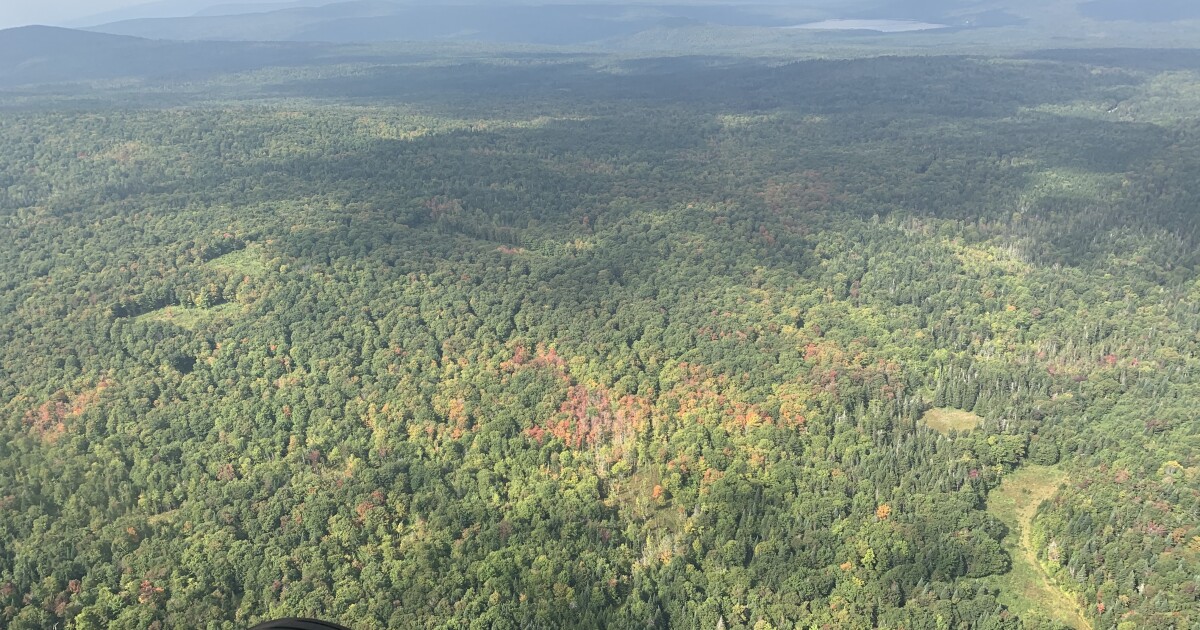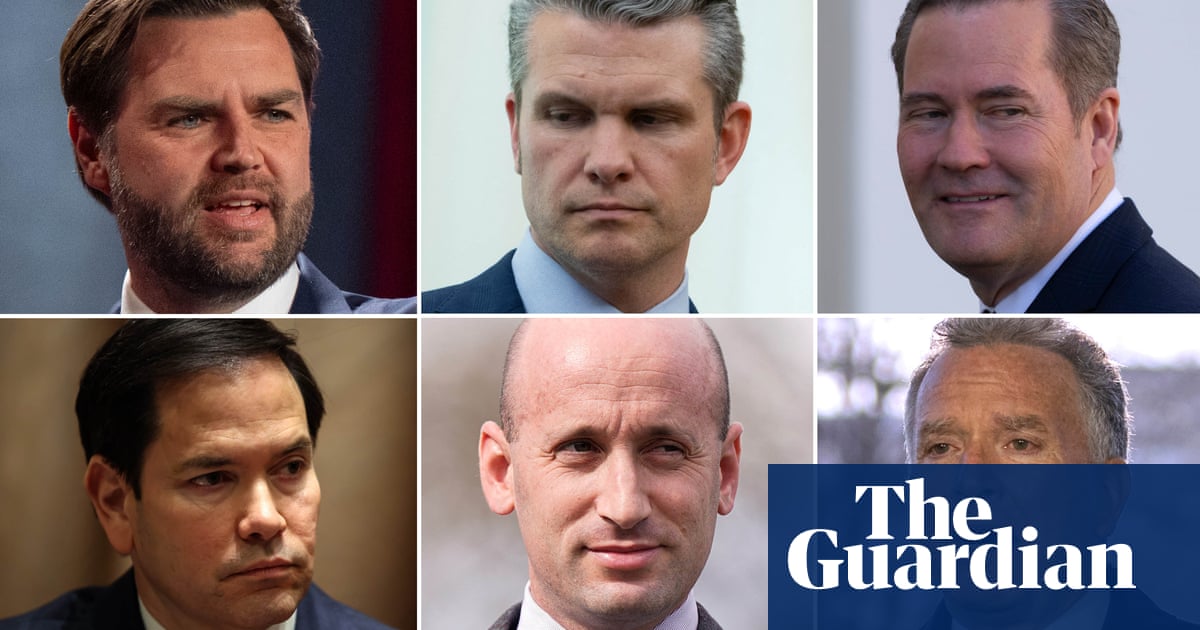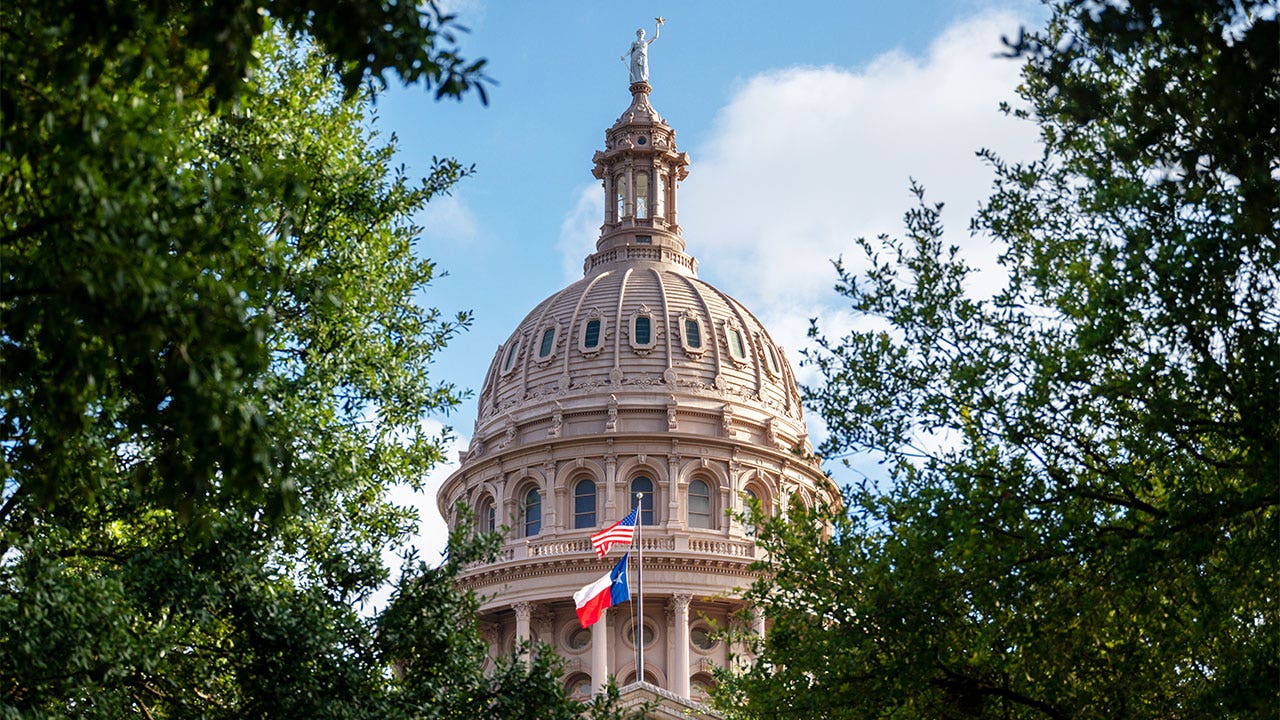Vermont
Vermont fall foliage: Forester predicts a good season

This summer brought a rash of unusual weather between a late season frost, wildfire smoke from up north and historic rainfall. And the wet weather in particular could have some big implications as leaf-peeping season gets underway in Vermont.
Josh Halman is a forester with the Vermont Department of Forest, Parks and Recreation. He also writes the department’s weekly fall foliage report.
Halman recently spoke with Vermont Public’s Mary Williams Engisch about the upcoming foliage season and the natural factors that play into foliage brilliance. Their conversation below has been edited and condensed for clarity.
Mary Williams Engisch: Before you spill the beans on what kind of colors Vermonters can expect this year, can you sort of set the scene and take us into the process of how leaves change? Like a lot of it has to do with rainfall. So how does moisture interact with the length of night, cooler temperatures, all those other factors?
Josh Halman: You know, the way that leaves change color and that whole process, like you mentioned, is geared by the change of day length, as well as the change in temperatures.
And that combination is what really cues trees to start going through this process of not only leaf color change, but also when to drop their leaves.
What we saw this year with all the rain that we had during the growing season was that, you know, in some places, trees were a little more stressed than others.
If they had waterlogged roots in particular, that could stress the tree out. And as the season went on, we in some locations saw a little bit of an uptick in what we call foliar pathogens. So fungi that might be on the leaves. And so some people have reported seeing that in various parts of the state right now.
And that result of having excess rain is that you are vulnerable to those sorts of pathogens coming in on some foliage. And although we are seeing this, you know, on street trees — as you drive around you might see some — it’s not the case for all trees in Vermont. And we have a lot of forest in Vermont, and a lot of that forest is not as heavily affected by these fungal pathogens as some of the trees that we’re seeing on the streets.
And what are we actually seeing when we notice leaves shifting into those beautiful reds and oranges and yellows?
Two things are really happening. So the yellows and oranges are actually compounds that tend to be in the leaves, depending on the species throughout the growing season. But they’re all masked by the chlorophyll in the green that’s on those leaves.
And so when we have fall temperatures and a shortening day length, the chlorophyll starts to degrade and it kind of unmasks those colors that are present in those leaves.
The beautiful reds that we see on the landscape, that’s actually a compound that can be generated this time of year. And oftentimes, you know, there’s only certain species that do produce those reds. And maples, obviously, are probably the most famous for it.
But when you have these cool nights, and then sunny days, that’s really the combination that can get those reds really popping.
I understand you got to survey Vermont forests from an airplane a couple of weeks ago. Is that something that you do each year? Or was that different for this year?
We monitor the health of the forest every year from an aircraft. And it depends how long that takes to actually map the entire state. This year, we went a little later, for a number of reasons.
And so we just happened to be up there for one day in September where we’re actually able to get a sense of what’s going on in parts of the state. And we were able to fly the Northeast Kingdom and saw some reds that were already on their way.
The colors that we saw that day in particular, you know, it was just pockets really. And that was the first week of September. So that is pretty early to see things. But we’re expecting there to be a good foliage season in Vermont.

Helen Lyons
/
Vermont Public
I mean, depending on where you are, there’s always something that looks great on the landscape with Vermont foliage, which is great. So we’re fortunate to have that. And then those trees that don’t have those fungal pathogens going on, the forest looks really good. And we’re expecting a good season.
Is there a benefit to the tree? When the leaves change color, does this changing leaf color attract pollinators? Is it helpful for insects or animals? Or does it benefit the forest floor in any way? Like what’s the point of all of this dang beauty?
Well, a lot of it is what’s happening when those leaves are changing color, especially with the degradation of chlorophyll and that sort of thing, is that some of those nutrients and the carbohydrates that are generated by the trees that are at that point still in the leaves — they’re going through a process known as resorption.
And those nutrients and carbohydrates can be transferred or trans-located into the tree and stored over the wintertime. So it’s kind of a benefit that we get to see these colors and there’s there’s some functional role that those reds can actually play as sort of — there’s some research that shows that it can be kind of like a sunscreen, or maybe a deterrent for insect feeding on some foliage as well. But the real deal is that the trees are finding a way to get those important carbohydrates stored for the winter in the tree.
That is cool. Can you help us map out which trees turn which colors? You mentioned those vibrant reds often are associated with maples.
Oaks can can have those red compounds as well. And you can see those sometimes being a little darker red, even sometimes almost bordering on purple.
Ash trees are the same way with that kind of coloration. When we get into species like birch species, those are typically more yellow. And the sugar maples have kind of the whole spectrum. You have your yellows, your oranges, your reds.
And what I tend to think of is kind of the the beauty of Vermont’s diversity of species is that we have conifer trees also that are peppered in there. And so you have these greens that are juxtaposed with those brilliant colors. And that’s that’s what makes it so pretty here.
Are there any environmental factors that you’re kind of waiting to see shakeout that could tell you even more about the foliage season?
So the weather that we’re experiencing right now from kind of early September until mid October is what really drives how vibrant the foliage is going to be. So if we are able to get those cool nights and bright sunny days, then we’d expect the foliage to be fantastic.

Elodie Reed
/
Vermont Public
Do upcoming fall conditions impact the length of leaf peeping season? Or does it also affect how vibrant those colors might be?
Yeah, the upcoming weather can influence the vibrancy of the foliage, if we do get those cool nights and sunny days. Another factor that comes into play, of course, is when these leaves are going to drop. And when we do have — you know whether it’s storms or high winds come through late in the foliage season, that can make a quicker end to the foliage season. But we can’t really predict that until we have that weather present.
Have questions, comments or tips? Send us a message.

Vermont
Final Reading: Vermont’s ‘climate superfund’ comes with complications – VTDigger

Last year, the Vermont Legislature made history by passing the nation’s first “climate superfund” law. This year is about figuring out all of the follow up questions that come with setting precedent.
One piece of that is how much money and time state agencies will actually need to carry out the research the law tasks them with.
Act 122 takes the polluters-pay framework from the federal hazardous waste Superfund and applies it to the costs of climate damages, like flood recovery or harm from extreme heat. Essentially, the law rests on the idea that Vermonters should not be the ones left with the bill for messes caused by climate change. Instead, the multinational oil companies responsible for extracting the fossil fuels driving climate change should be.
But figuring out what those companies are liable for and how much climate damages actually cost is no small order. It relies on the rather-nascent field of climate attribution science, which essentially uses modeling to figure out how likely a weather event would be if greenhouse gas emissions were at pre-industrial levels.
Scientists have gotten really good at doing this for heatwaves, but when it comes to flooding, especially in the unique mountain-valley topography of Vermont, a lot of the research simply doesn’t exist yet, Deputy Treasurer Gavin Boyles told the House Committee on Energy and Digital Infrastructure Friday afternoon.
That’s why the Office of the State Treasurer and the Agency of Natural Resources are asking the Legislature for an extra year to do these assessments and for an additional $825,000 and $675,000, respectively, in order to hire people who can help them assess climate damage costs to Vermont. ANR is also hoping to put a portion of those funds toward hiring an additional attorney to navigate incoming lawsuits.
That brings us to the second piece of this: in December, the U.S. Chamber of Commerce and American Petroleum Institute filed a legal challenge.
Among its claims, the lawsuit hinges upon an argument that the federal Clean Air Act preempts Vermont’s law. It cites existing legal precedent that says the Clean Air Act allows the federal Environmental Protection Agency the power to regulate greenhouse gas emissions, not just air pollution.
The fact that this comes as the EPA is acting to dismantle the powers included in the Clean Air Act, leads to “complete cognitive dissonance,” Anthony Iarrapino, an attorney who lobbied for the law’s passage, said in an interview.
Changes at the EPA would not affect the ability of Vermont’s climate superfund to go into effect.
However, those changes might muddle the fossil fuel industry’s argument in the lawsuit “What the Trump administration is doing to weaken the Clean Air Act only strengthens our argument that states have a right to act and fill in where the federal government has retreated,” Iarrapino added.
The lawsuit itself appears to be moving slowly; “I totally thought I’d be subject to depositions and records requests, but I’ve heard nothing,” Legislative Council Michael O’Grady told the House Committee on Energy and Digital Infrastructure. “It’s curious that it’s been pretty silent.”
— Olivia Gieger
In the know
The Vermont Agency of Transportation expects that it will pave about 220 miles of state-owned roads over a yearlong period that ends in June. In the year after that, though, it’s set to pave only about 125 miles, according to the agency’s latest spending plans — a nearly 45% reduction.
That drop has raised concerns among the leaders of the Legislature’s committees on transportation in recent weeks, who said that while the amount the state paves varies each year, the projected change from the 2025 to 2026 fiscal years stands out.
Miles paved over the 2026 fiscal year, which starts this July, would be the lowest since 2020, agency data shows, when the state paved 157 miles of roads it owns and operates.
“We’re in a bad place,” said Sen. Richard Westman, R-Lamoille, who chairs the Senate Transportation Committee.
Read more about the state of the transportation fund here.
— Shaun Robinson
The Green Mountain Care Board unanimously approved a settlement with the University of Vermont Health Network Friday, paving the way for a deal in which the hospital network will pay millions to primary care practices and the state’s largest private insurer, and will fund an outside observer to oversee the hospitals’ spending and operations.
It’s not yet clear who that observer — officially called a “liaison” — will be.
But Mike Smith, a former Secretary of the Agency of Human Services and the Agency of Administration, said in a brief interview Friday that he had had conversations with the board and the health network about the role.
“There’s a process, and let me just say that I’ll let the process play out and see where it leads,” he said. But, he added, “I mean, obviously, if I’m talking to people, I’m interested.”
Read more about the Green Mountain Care Board’s vote here.
— Peter D’Auria
For the second time this legislative session, Gov. Phil Scott vetoed a mid-year spending package Friday over disagreements with lawmakers about Vermont’s motel voucher program.
In his veto letter, the five-term Republican governor rebuked lawmakers for continuing to use the mid-year budget adjustment bill to seek an extension of the voucher program’s winter rules, which ended earlier this week, forcing out hundreds of Vermonters who have been staying in motels.
Read about the veto and the response here.
— Habib Sabet
Visit our 2025 bill tracker for the latest updates on major legislation we are following.
Vermont
‘Hands Off’ protests against President Trump, Elon Musk planned across VT this weekend

Columbia University faculty protest new policies
Days before students returned, Columbia University gave into the Trump administration’s demands and announced new disciplinary processes.
More than a thousand protests against President Donald Trump and Elon Musk’s policies are planned around the country Saturday, including several in Vermont.
Several grassroots organizations are coordinating the rallies, which are called “Hands Off!” The organizers say the mobilization is in protest of what they call “the most brazen power grab in modern history.”
They come days after Trump imposed tariffs on imports from all countries. Similar protests have been held around the country since January.
In Vermont, rallies are planned in Burlington, Montpelier and more.
What is the ‘Hands Off’ protest?
The April 5 rallies are in protest of a slew of Trump’s actions, including Social Security, Medicare and immigration policies, according to the protest’s website.
Several groups are co-sponsoring the “Hands Off” protests, including 50501, Indivisible and Women’s March.
“Trump, Musk, and their billionaire cronies are orchestrating an all-out assault on our government, our economy, and our basic rights—enabled by Congress every step of the way,” the website says.
‘Hands Off’ protests in VT include one in Burlington
There are more than a dozen “Hands Off” protests planned around Vermont for Saturday.
In Burlington, a rally is planned from noon to 2 p.m. at Burlington City Hall.
Here are the other areas taking part:
Melina Khan is a trending reporter for the USA TODAY Network – New England, which serves more than a dozen affiliated publications across New England. She can be reached at MKhan@gannett.com.
Vermont
Final Reading: Year after year, lawmakers consider Vermont’s continued use of out-of-state prisons – VTDigger

“I think it’s below contempt.”
Rep. Conor Casey, D-Montpelier, did not mince words describing Vermont’s use of a for-profit, out-of-state prison to hold more than 100 people: “I know it’s cheaper, and it’s cheaper for a reason.”
The prison, Tallahatchie County Correctional Facility in Tutwiler, Mississippi, is operated by CoreCivic, a company that gleefully welcomed increased deportations and immigration detentions under President Donald Trump due to the economic implications for the corporation.
Casey and his colleagues on the House Corrections and Institutions Committee were discussing H.191, a bill that would end Vermont’s use of for-profit prisons and prison services — including its health care contractor, Wellpath. But the lively discussion focused less on the bill itself than its philosophy — the idea that Vermont lets corporations profit off people in state custody, some of whom are held more than a thousand miles away.
“I appreciate, I think, the spirit of the legislation,” Isaac Dayno, executive director of policy and strategic initiatives at the Vermont Department of Corrections, told lawmakers. “We just don’t have the beds.”
The state could end or limit out-of-state incarceration through several methods — reducing the number of people locked up, ending the use of state cells by federal agencies, or building more space to incarcerate people.
But the state has struggled to find communities willing to welcome a new prison. And then there’s the money problem.
“We can’t even build schools,” Rep. Shawn Sweeney, D-Shelburne, noted — a nod to Vermont’s school construction conundrum.
Many committee members agreed with the legislation’s principle, but, as Rep. Mary Morrissey, R-Bennington, put it, “I’m not quite there yet.”
Still, the bill drew support from the Vermont State Employees’ Association, the union representing state workers. Steve Howard, the union’s executive director, urged House Corrections to give H.191 “very serious consideration,” because the state’s existing arrangement is “not consistent with the values of the people of Vermont.”
The committee ultimately decided to shelve the bill and wait for a study due in November that will answer some questions regarding ending out-of-state incarceration. In the meantime, lawmakers hope to hear directly from someone at CoreCivic to learn about conditions for people incarcerated at the Mississippi prison. Vermont’s contract with the corporation is scheduled to end in September.
— Ethan Weinstein
In the know
President Donald Trump on Wednesday declared sweeping tariffs on imports from most nations, escalating a trade war that state officials and business leaders have warned could have dire consequences on Vermont’s economy.
At a glance, the Green Mountain State was spared the worst of Wednesday’s announcement, owing to Canada’s exemption from Trump’s comprehensive “reciprocal tariff” package. But Vermont consumers and businesses can hardly breathe a sigh of relief.
“The bottom line is that consumers across the entire country are going to see their prices go up,” said State Treasurer Mike Pieciak. “Businesses not just in Vermont, but around the country are going to be feeling the effects of this broader trade war, and those effects are largely going to be passed down to consumers.”
According to an estimate from the state treasurer’s office using data from the Yale Budget Lab, price increases from the latest round of tariffs could collectively cost Vermont households approximately $1 billion annually, with each household seeing about $3,800 of additional costs per year.
Read more about the impacts here.
— Habib Sabet
Vermont officials are assessing how residents may be affected after the mass firing of federal workers who administer the LIHEAP program, which provides millions of dollars in heating assistance to low-income households in the state.
The cuts, reported by national news outlets Wednesday, won’t immediately affect Vermonters receiving the federal assistance, according to the state Agency of Human Services. But the agency is still evaluating potential impacts to the program in the long term, Economic Services Division Deputy Commissioner Miranda Gray said via email Thursday.
The Low Income Home Energy Assistance Program provided $23 million in funding to Vermont in 2025 for the winter season, which runs from November to April. That money has already been allocated to the state, according to Tom Donohue, CEO of BROC Community Action.
Read more about LIHEAP program impacts here.
— Erin Petenko
On the move
The Legislature has once again sent a midyear spending bill to Gov. Phil Scott’s desk, but a partisan standoff over Vermont’s motel voucher program continues to unfold.
On Thursday afternoon, the Senate gave final approval to its second attempt at an annual budget adjustment bill, after Scott vetoed the first version last month. But without a key change sought by Republicans to narrow criteria for the voucher program, the bill appears destined to meet the same fate.
Republicans brought forward an amendment Thursday to bring eligibility rules for the motel program in line with an executive order signed by Scott late last week. The order — which the Legislature’s chief lawyer has called unconstitutional — extended motel stays for families with children and certain people with acute medical needs through June 30.
Read more about the standoff here.
— Carly Berlin
Visit our 2025 bill tracker for the latest updates on major legislation we are following.
On the hill
Vermont Sen. Bernie Sanders, I-Vt., again unsuccessfully attempted to block certain U.S. arms sales to Israel Thursday, decrying the scale of destruction and death caused by that country’s war against Hamas.
Sanders forced a vote in the U.S. Senate on two joint resolutions of disapproval, which — if approved — would have prevented the transfer of heavy bombs and other munitions worth almost $8.8 billion to the Israeli government, his office said in a press release.
“The United States must not continue to be complicit in the destruction of the Palestinian people in Gaza,” Sanders said in his speech to the body. “History will not forgive us for this.”
The two resolutions failed to reach the votes necessary to move forward, each garnering 15 Yeas and more than 80 Nays. Sen. Peter Welch, D-Vt., voted in support of both measures.
— Kristen Fountain
-

 News1 week ago
News1 week agoTrump Is Trying to Gain More Power Over Elections. Is His Effort Legal?
-

 World1 week ago
World1 week agoNo, Norway and Sweden haven't banned digital transactions
-

 News1 week ago
News1 week agoCompanies Pull Back From Pride Events as Trump Targets D.E.I.
-

 News1 week ago
News1 week agoWednesday briefing: Just how bad was the White House accidentally leaking military plans over Signal?
-

 Technology1 week ago
Technology1 week agoPorsche’s next Taycan gets an infotainment upgrade — but no new CarPlay
-

 Politics1 week ago
Politics1 week agoTexas DOGE bill passes Senate to streamline state regulations
-

 News1 week ago
News1 week agoFederal judge who drew Trump's anger picks up new case against administration
-

 World1 week ago
World1 week agoUS Army says vehicle of four missing soldiers found in Lithuania















